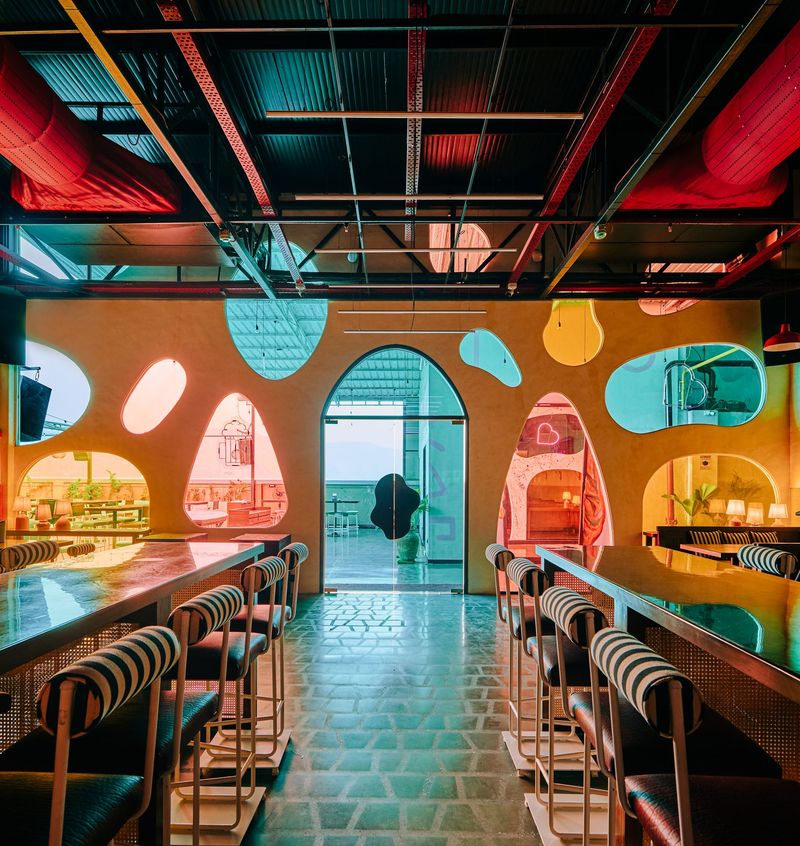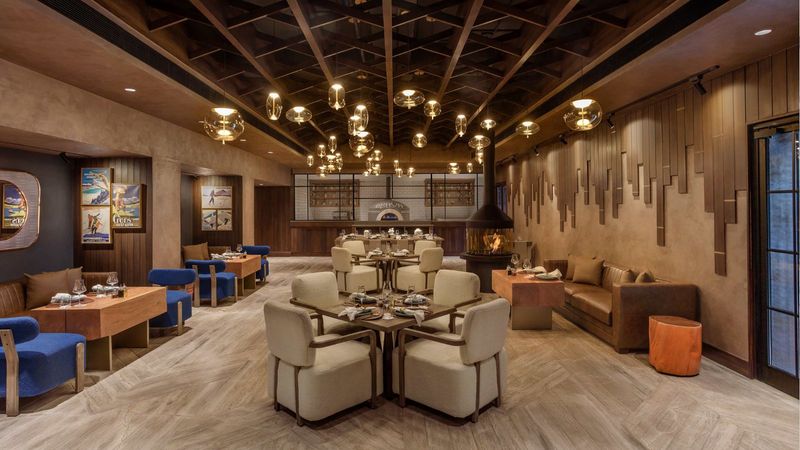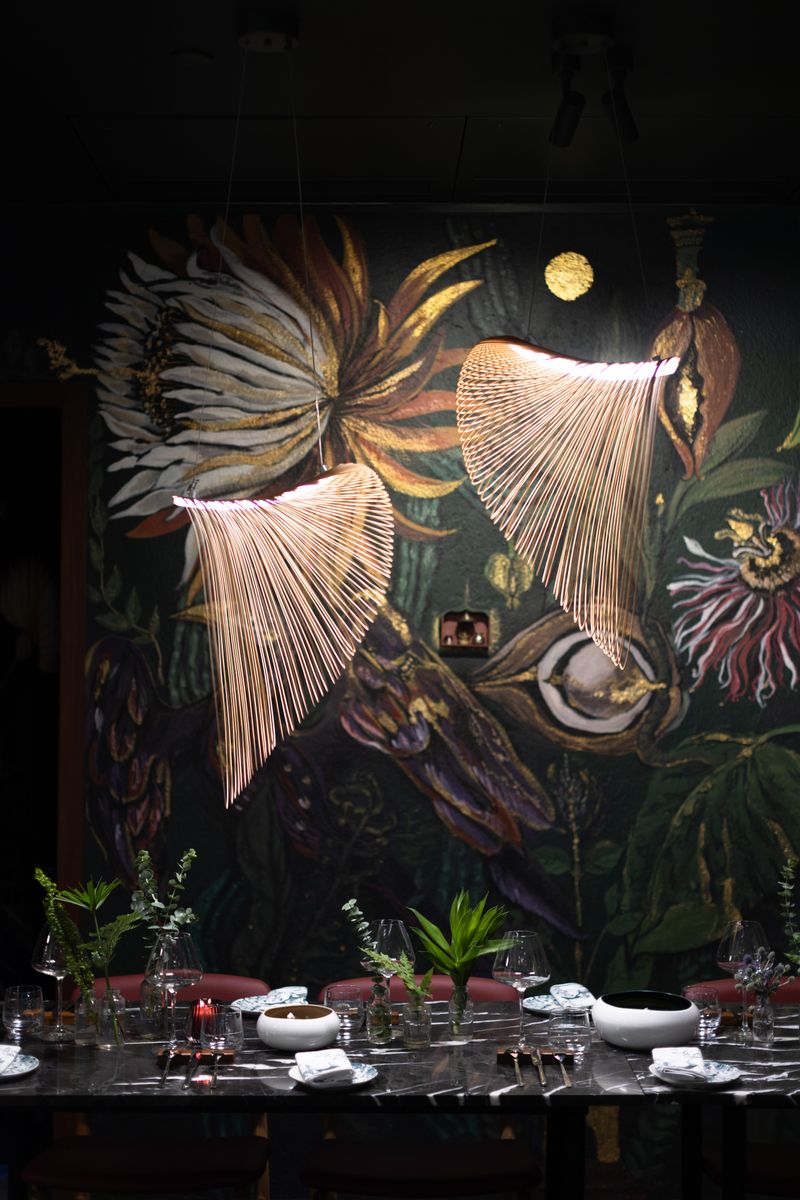“A good restaurant is like a vacation; it transports you and it becomes a lot more than just about the food,” said Philip Rosenthal, television writer and producer. And as if on cue, there has been a new trend of designers working towards creating a restaurant ambience that accentuates the overall meal experience.
Transforming spaces

Interior design plays a transformative role in the world of gastronomy as it adds to the sensory experience of dining. The main catalyst for this transformation is the thriving restaurant industry, characterised by the proliferation of new dining establishments. As numerous restaurants enter the market, clients are eager to set themselves apart by crafting distinctive, visually captivating environments. This shift is further driven by the necessity for cost-effective designs that align with the long-term business objectives of these establishments. Minnie Bhatt, principal architect, Minnie Bhatt Designs, explains: “Within the field of restaurant interior design, we are observing a dynamic shift in trends. The current fashion is moving away from the transient and flashy designs that were popular in recent years, focusing instead on creating enduring, welcoming, and creatively inspired restaurant interiors. This trend aims to craft spaces that withstand the test of time and offer a warm and unforgettable atmosphere for diners.”
Narrating a story

Restaurant interiors today are veering towards telling the story of the brand and its ethos. Bengaluru's second Burma Burma outlet at Forum Rex Walk, Brigade Road, is modelled on the lines of a typical Burmese veranda and uses a natural tone with subtle pastel hues that pay tribute to Burma's stunning countryside in the Bagan region. Burmese textiles and artefacts, ochre cement tiles, and a hand-painted Raj Oshok flowers (Pride of Burma) pillar set the tone for the meal. Interior designers today are engaged in conveying the brand's narrative and essence through restaurant interiors by harmonising interior design with the brand's visual identity. Saniya Kantawala, principal designer and founder of the eponymous interior design firm, explains: “The mind is a gifted tool with layers of visions, so why stick to one? By creating thoughtful designs that foster a positive and nurturing environment, we ultimately elevate the quality of life for our clients. This approach allows us to weave a compelling brand narrative through interior design.”
Nature inspired

The emerging trend among up-and-coming restaurants involves a harmonious fusion of nature with indoor aesthetics, creating an environment where the line between outdoors and indoors blurs into a delightful, seamless experience. To achieve this transformation, designers are embracing a palette of subdued, earthy tones that not only infuse a sense of tranquilly but also exude an underlying air of sophistication.

“The application of natural materials further enhances the overall aesthetic, connecting diners with the essence of the environment. Another noteworthy development in the world of restaurant interiors is the blending of outdoor and indoor spaces. This design strategy is altering the very layout of modern restaurants, reimagining how patrons can dine, socialise, and connect with the surrounding environment,” says Apoorva Shroff, founder, lyth Design. Take the case of ‘Brava’, the Italian restaurant at the Khyber Himalayan Resort designed by Studio B’s founder and principal architect, Anil Badan. The outdoor deck opens into two spaces to complement the temperament and proportions of the requirements. The outdoor lounge offers a mesmerising view of the Pir Panjal Mountain range. “The adjacent dining space accommodates long tables for larger groups in addition to an open chef’s table, where patrons can witness the carefully curated menu of the restaurant and get ready to serve. Embarking on sustainable design integrations, Studio B has incorporated elements like live-edged furniture made from thick local wood and heated local stone flooring on the outer deck to keep the cold at bay,” says Badan.
Collaboration cues
Another intriguing facet of the evolving landscape of restaurant design is adopting a collaborative approach to their design, rendering the dining experience more holistic and captivating. This approach harnesses the collective creative genius of multiple individuals who come together to craft a truly distinctive atmosphere. “The collaborations can range from skilled furniture designers and visionary architects working in harmony to synthesise the spatial elements to multiple artists bringing well-curated artworks to the mix. This amalgamation of diverse creative experts can cohesively bind the overarching design philosophy of the space, culminating in a dining experience that is both engaging and visually stunning,” says Shroff.
Form meets function

Elements such as efficient table layouts, well-planned service counters, appropriate lighting, and effective climate control are essential in restaurant design. “These aspects are often underestimated but play a pivotal role in enhancing the overall dining experience and the operational efficiency of the restaurant. Striking a balance between aesthetics and functionality is vital to fashioning a successful and unforgettable dining space,” says Bhatt. As restaurants become increasingly ‘Instagramable’, a restaurant outing is all set to become an affair that is not restricted to just culinary delights but one that engages all the senses holistically. So, shall we say bon appetite to a new age eclectic vibe?


_1700125249623_thumb_1200.jpeg?w=3840&q=75)